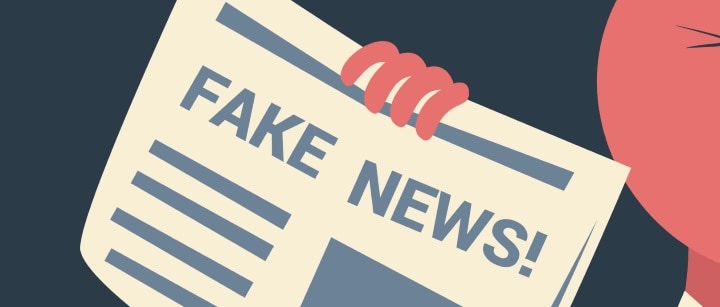Fake News Too Frequently Is The News
Most people wonder about ‘Truth in Advertising’ and there’s even a spoof on YouTube about the lack thereof.
But what about Truth in the reporting of news?
From August to November 2016, fake stories earned more shares, reactions, and comments on Facebook than real news stories.
A Pew Research Center poll found that 64 percent of Americans believe fake news is causing “a great deal of confusion” about the basic facts of current events.
As Pew explained, “(fake news) makes it harder for any of us to have a shared view of the facts.” This concern transcends political parties — roughly 6-in-10 Republicans and Democrats agree that fake news causes a “great deal of confusion.”
Yet Americans say they’re not fooled by fake news. Thirty-nine percent are “very confident” they can recognize news that is fabricated. An additional 45 percent feel “somewhat confident.”
But an Ipsos poll for Buzzfeed News found that 75 percent of Americans who recognized a fake news story from the election still viewed the story as accurate.
Respondents were shown six headlines — three false and three true. If they recalled seeing the story before, they were asked if the headline was accurate.
Respondents believed the fake headlines were “somewhat” or “very” accurate 75 percent of the time.
One made-up story (“Donald Trump Sent His Own Plane to Transport 200 Stranded Marines”) was viewed as accurate by 84 percent of respondents.
A Stanford University study similarly found that Americans rarely recognize false stories or biased sources.
What do we think needs done to fix this?
Seventy-one percent of Americans believe that sites like Facebook should take steps to stop fake news. Facebook obviously has an incredible impact on what we talk about with 1.8 billion monthly users.
Nearly half of American adults obtain news from Facebook.
Facebook recently announced it will partner with third-party fact checkers to flag fake articles and alert users before they share fake news.
A red warning sign reading, “Disputed by 3rd Party Fact-Checkers” will display below fake stories. If a user tries to share the story, a similar warning pops up with a link to the fact-checker’s article.
Facebook will also “rank ‘disputed’ stories lower in news feed and will not allow ‘disputed’ stories to be turned into ads and promoted.”
Meanwhile, Google has said it would prevent websites selling fake news from using its advertising network. These steps will surely help readers identify fake news and slow its spread.
That’s a good step to help us out. But we need to do some work too.
Let’s take a little time to look beyond Facebook, Twitter, and other social media sites to gather content. Let’s go just a little bit deeper than headlines and soundbites so we can gain more of an understanding of the real story.
Yes, we all have biases so every outlet will too.
But it doesn’t hurt to gather multiple points of view. And despite the backlash against the “mainstream media” those outlets still adhere to fact checking and other long standing journalistic practices.
We all need to play our part in reducing the impact of fake news. Take the time to weed out the nonsense. Get real.


